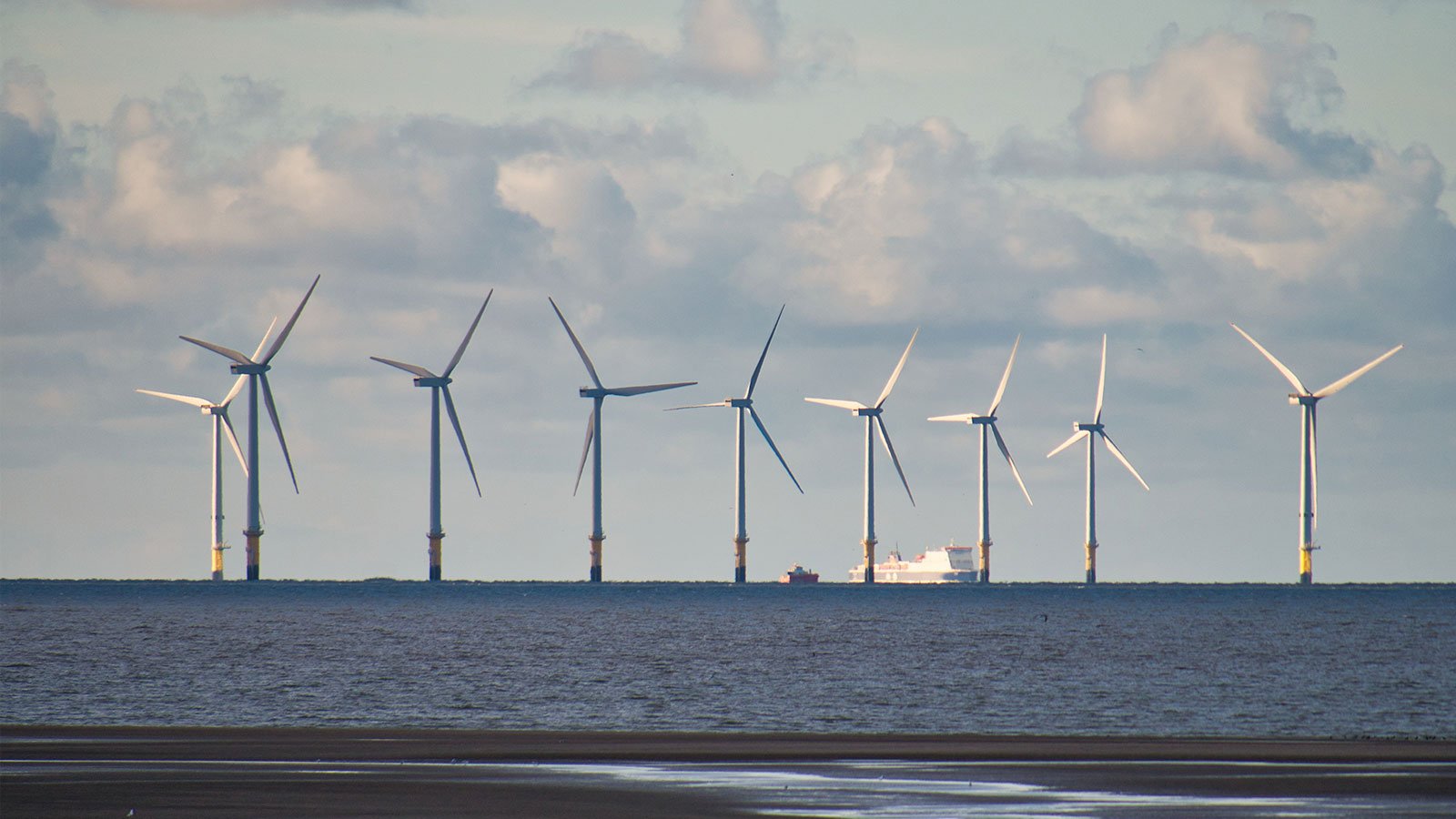The UK can now boast that its primary source of electricity comes from a renewable source, as wind beat out gas for the first time ever during the first three months of 2023.
Almost a third (32.4%) of Britain’s electricity was provided by wind power during the first quarter of 2023, eclipsing gas for the first time ever. That’s especially impressive as gas has held the crown as the UK’s largest source of electricity since 2015, with the dominant source prior to that being coal.
The new research from Imperial College London, which produced the latest instalment of the quarterly Drax Electric Insights report, suggests that the UK is well on its way to decarbonising its energy grid. That’s despite some tough quarters for consumers with skyrocketing energy bills. However, there are still challenges ahead for the sector, as revealed by a recent report by Business, Energy and Industrial Strategy (BEIS) Committee.
According to the Drax Electric Insights report, the UK’s fleet of wind turbines generated 24 TWh of electricity, which is enough to charge more than 300 million Tesla Model Ys. That’s an impressive figure, but one that is likely to only grow over the next few years.
The UK has gradually built out a robust fleet of offshore wind farms, taking advantage of its geographic position as an island. In fact, the UK is home to some of the most notable wind farms, including the world’s largest, in the form of Hornsea 2, and the world’s first floating wind farm off the coast of Peterhead, Scotland. There’s no sign that this growth will be slowing down anytime soon, with the UK Government having ambitious plans to invest in both regular offshore wind farms and floating wind farms.
While gas is still a large source of the UK’s electricity, making up 31.7% of the total during the first quarter of 2023, its output is slowly declining. While output from wind was 3% higher during the first three months of 2023 vs the same period last year, the output of gas has declined 5%.
The good news doesn’t end there though, with renewable sources as a whole supplying 42% of the UK’s electricity during the first quarter. That includes the impressive output from wind, as well as solar, biomass, and hydro. Of course, given the shorter days, solar is unlikely to be a dominant electricity source during the first quarter, but given its growing presence across the UK, could come into its own during the summer months.
Dr Iain Staffell of Imperial College London, and lead author of the quarterly Drax Electric Insights report series, noted, “The renewable power revolution has transformed how Britain gets its electricity, making our power grid cleaner and greener.
“In the space of a decade the UK has almost completely cut out coal, after relying on the most polluting fossil fuel for over a century to power our country. There are still many hurdles to reaching a completely fossil fuel-free grid, but wind out supplying gas for the first time is a genuine milestone event, and shows what can be achieved when governments create a good environment for investors in clean technology.”
Britain has just one coal-fired power station left following Drax ending the use of the fuel at its plant in North Yorkshire last month. Once the largest coal-fired power station in Western Europe, the plant is now the single largest generator of renewable power in the UK. Over the last decade four of the power station’s six generating units have been converted to use sustainable biomass, providing the UK with clean, green, and secure renewable electricity.
Bruce Heppenstall, Drax Power Station Plant Director, added, “This is a remarkable achievement for the UK, and it comes at a vital time when cutting the use of foreign gas is critical to our national energy security. Throughout the energy crisis, biomass has also played a crucial role in providing the country with a reliable source of renewable power to displace fossil fuels from abroad.
“At Drax, we believe the UK must now focus on unlocking investment in carbon negative technologies, such as Bioenergy with Carbon Capture and Storage (BECCS), which permanently remove more carbon dioxide from the atmosphere than they emit. Only BECCS can simultaneously remove millions of tonnes of carbon dioxide from the atmosphere whilst also generating reliable, renewable power when the wind isn’t blowing, or the sun is not shining.
“Countries across the world, and particularly the United States, are stepping up to address climate change, we believe the UK Government should accelerate its policy support for BECCS to give this country the best chance of establishing itself as a world leader in carbon removals, attracting further clean energy investment, creating jobs and delivering its net zero targets.”

